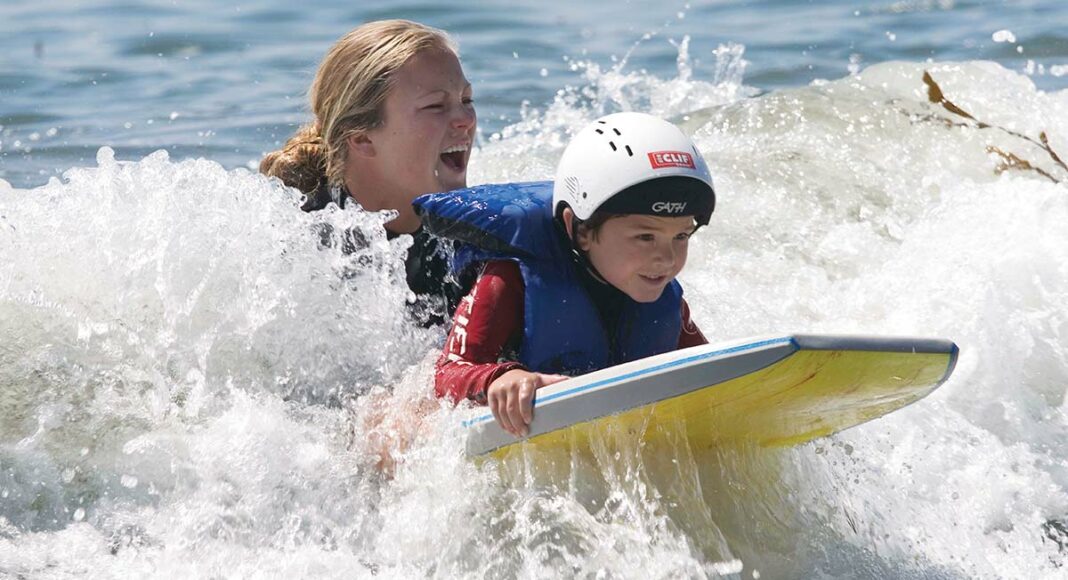Just down Pacific Avenue, past the roundabout, patiently lapping Cowell Beach, is a whirring, buzzing biodiverse underwater kingdom: it’s the Monterey Bay National Marine Sanctuary, a protected expanse of ocean, and it beckons.
From Marin to Cambria, the sanctuary encompasses 276 miles and 6,094 square miles of ocean (it’s bigger than Yellowstone) and, at its deepest point, it’s 12,713 feet deep.
“We call it the Serengeti of the sea,” says Lisa Uttal, education specialist for the Sanctuary Exploration Center, because with 34 species of marine mammals, more than 180 species of seabirds and shorebirds, and at least 525 species of fish, the opportunities below the waves are even more abundant than above them.
It’s why the dedicated people behind the Sanctuary Exploration Center want to get as many people on it, in it, and near it as possible. On June 25, they’re hosting an entire day to show locals and visitors how they can not only get a great summertime tan, but also learn about ocean etiquette, as well as sneak a peek at nature’s cutest animals (have you ever seen baby otters feed?) and how to do so safely, says Uttal.
Kayak, surf, Segway and whale-watching vendors will be tabling all day in front of the Exploration Center and visitors can learn all about how to sustainably and responsibly interact with wildlife. Between 10 a.m. and 2 p.m. visitors will be able to tune into the Nautilus Live at the center’s theater with a live broadcast of Dr. Robert Ballard’s Nautilus deep-sea research team, what they’re looking at under the deep blue, and take part in a question and answer session with the crew.
“The real objective is to showcase recreational, sustainable tourism opportunities—we’re going to do that through social media, engage people through the hashtag #ILoveMySanctuary,” says Uttal.
It’s all part of the national campaign to highlight the country’s 14 marine protected areas, which includes the Monterey Bay Sanctuary.
“It’s kind of like your underwater national forest, you can still fish in them but there are regulations to help protect these vital resources,” says Uttal. “The beauty is that people here have a chance to experience the sanctuary through kayaking, whale watching, getting on a boat and sailing, or strolling along West Cliff.”
Take a stroll down West Cliff and you’re bound to see otters, dolphins, sea lions, and whales, often within mere minutes of one another, says Uttal.
“May through September is one of the most productive times in the Monterey Bay. Nutrient-rich waters come from the deep submarine canyon and fertilize the water, making it really productive—so you get a lot of plankton, which fish and marine mammals dine on,” she says. “In the last few years we’ve had an incredible diversity of whales and fish and other animals that have come to the sanctuary, it’s an amazing visitor attraction.”
.Santa Cruz Sanctum














